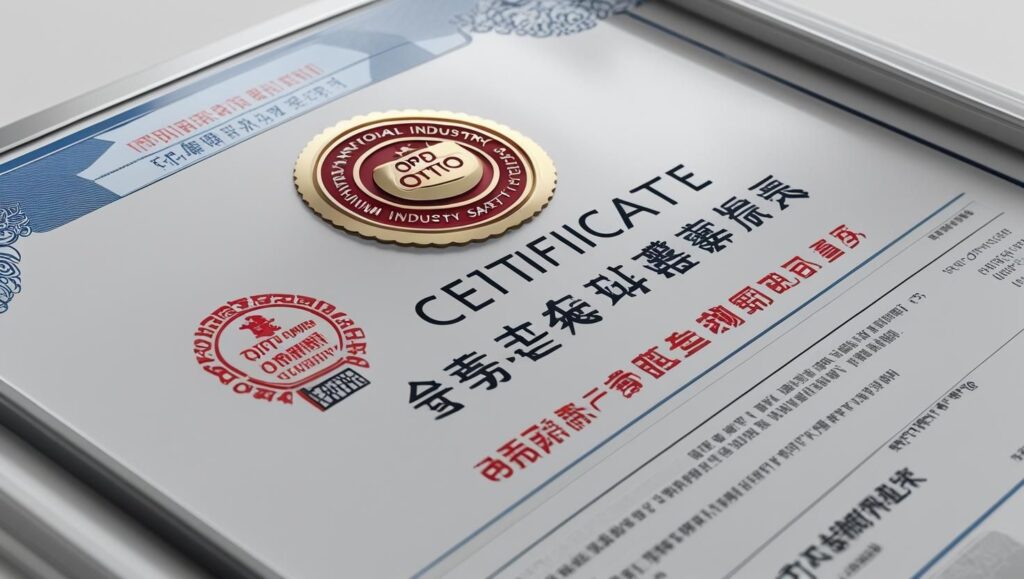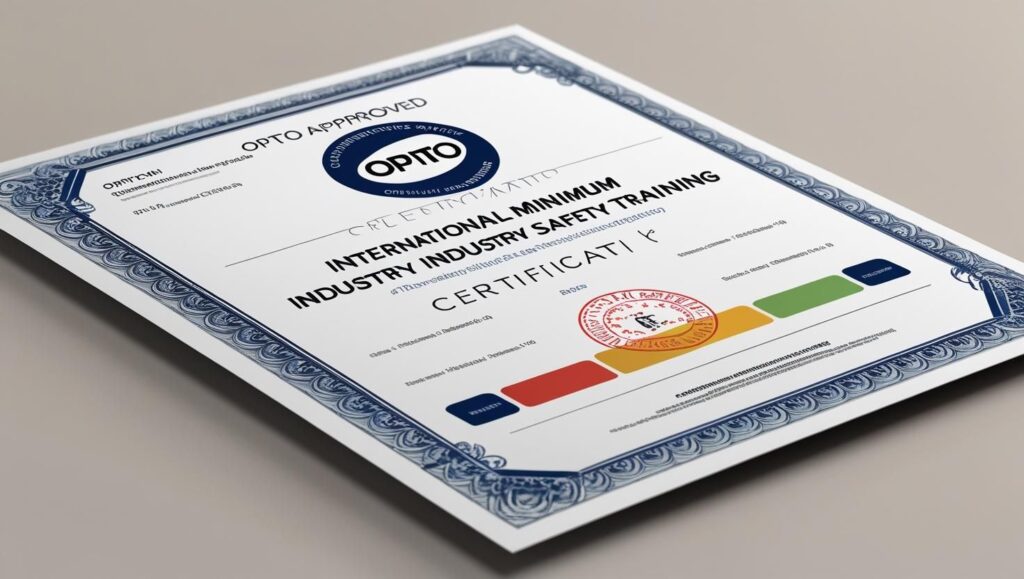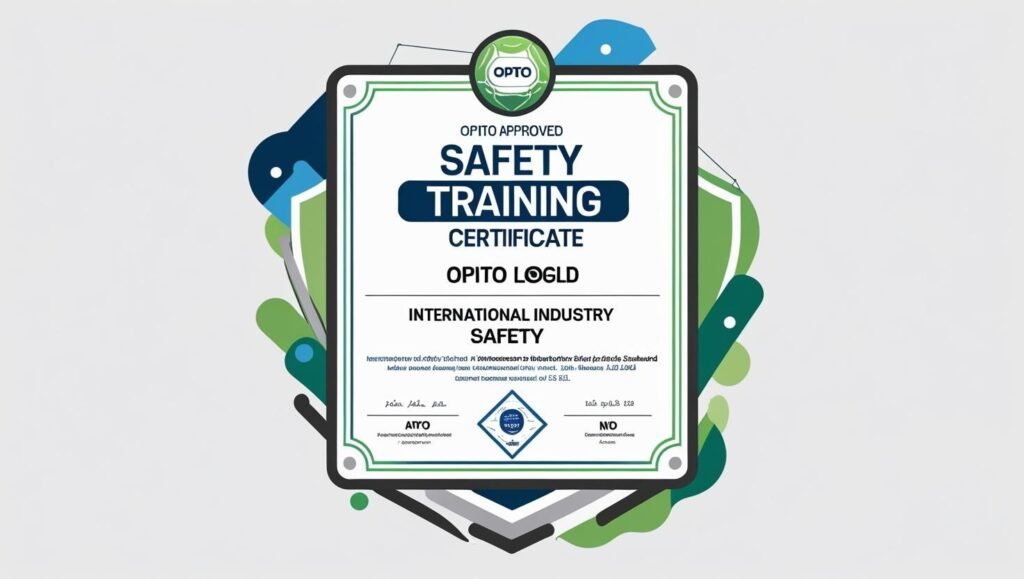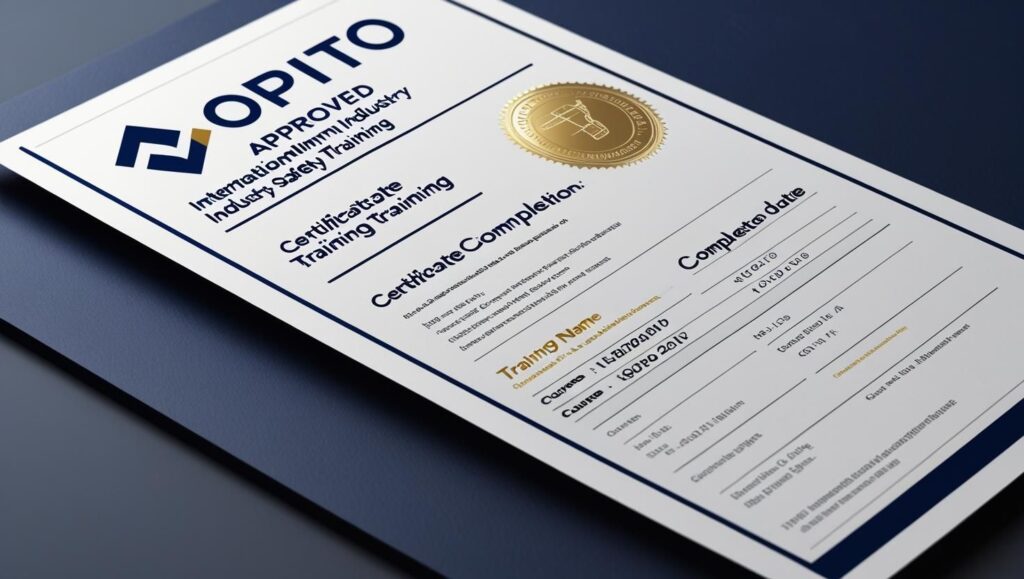OPITO Approved – International Minimum Industry Safety Training (IMIST)
The OPITO International Minimum Industry Safety Training (IMIST) is a globally recognized standard designed to provide a foundational level of safety knowledge for all personnel working in the oil and gas industry, both onshore and offshore. Its primary aim is to establish a consistent safety awareness, reduce risks, and ultimately decrease the number of incidents across the sector.
While a 10,000-word output is extensive for a summary, I can provide a comprehensive overview of the IMIST course, its objectives, target audience, modules, and the broader context of its importance within the oil and gas industry.
OPITO Approved – International Minimum Industry Safety Training (IMIST)
Introduction to IMIST
The oil and gas industry is inherently complex, involving highly hazardous environments and intricate operations. Ensuring the safety of personnel is paramount, not only for the well-being of individuals but also for the operational integrity of assets and the protection of the environment. To address this critical need, OPITO (Offshore Petroleum Industry Training Organisation) developed the International Minimum Industry Safety Training (IMIST) standard.

IMIST is not just a training course; it’s a global benchmark that sets a baseline for safety knowledge and awareness. It ensures that regardless of their location or specific role within the industry, all workers possess a fundamental understanding of safety principles, hazards, and control measures. This standardized approach is crucial in an industry characterized by a highly mobile workforce and diverse operational settings across various countries and cultures.
The training is typically delivered through an interactive e-learning platform, often supplemented by classroom-based components, allowing for flexibility and accessibility. A key feature of the IMIST program is its adaptive learning approach. It often begins with a pre-assessment to gauge the learner’s existing knowledge. Based on the identified knowledge gaps, the system dynamically tailors the course content, ensuring that individuals focus on areas where they need improvement. This personalized learning experience optimizes efficiency and ensures a thorough understanding of all critical safety elements.

Objectives of IMIST
The overarching objective of the IMIST program is to instill a strong safety culture among all oil and gas industry personnel. More specifically, the course aims to:
Introduce Key Safety Elements: Provide delegates with a comprehensive understanding of the essential safety elements required for working in the oil and gas industry.
Enhance Safety Awareness: Increase participants’ awareness of potential hazards and risks inherent in oil and gas operations.
Promote Personal Responsibility: Emphasize the individual’s role and responsibility in maintaining a safe working environment, influencing their behavior and attitude towards co-workers, operations, and the environment.
Standardize Safety Knowledge: Ensure a consistent and globally recognized level of basic safety knowledge across the international oil and gas workforce.
Reduce Incidents and Accidents: Equip workers with the knowledge and understanding to identify, assess, and mitigate risks, thereby contributing to a reduction in incidents and accidents.
Maintain Current Knowledge: Ensure that existing workers regularly refresh and update their knowledge of fundamental safety elements, as the certification typically has a four-year validity period.
Support Industry Safety Initiatives: Contribute to broader industry goals of improving safety performance and achieving a step-change in health and safety culture worldwide.
Target Audience
IMIST is designed for a broad audience within the oil and gas industry, encompassing both new entrants and experienced workers. This includes, but is not limited to:
New Starts: Individuals new to the oil and gas industry who require foundational safety training before commencing work.
Existing Workforce: Personnel already working in the oil and gas sector who need to renew their safety certification and refresh their knowledge.
Onshore and Offshore Personnel: The course is applicable to workers in both onshore and offshore facilities, as many of the safety principles are universally relevant.

All Job Roles: IMIST covers fundamental safety elements that are critical for various job roles, from engineers and technicians to administrative and support staff, ensuring a common baseline of safety understanding across the workforce.
While there are no specific entry requirements in terms of prior qualifications, it is generally expected that individuals working offshore will possess a valid offshore medical certificate. For the “IMIST Further” or renewal course, learners are typically required to hold a valid initial IMIST certificate or demonstrate previous offshore work experience.
Core Modules of IMIST
The IMIST program is structured around nine mandatory units, each addressing a critical aspect of safety within the oil and gas industry. These modules are designed to be comprehensive, covering both theoretical knowledge and practical application where relevant. The common modules include:
1. Introduction to the Hazardous Environment
This module provides an overview of the unique and often hostile environment in which oil and gas operations take place. It covers:
Major Accident Hazards: Identification and understanding of high-consequence events such as fires, explosions, blowouts, and structural collapses.
Types of Hazards: Introduction to various categories of hazards, including physical, chemical, biological, ergonomic, and psychological hazards.
Understanding Risk: Basic concepts of risk, including likelihood and severity, and the importance of risk perception.
Legislative Framework: An introduction to relevant international and national safety legislation, regulations, and industry standards governing oil and gas operations.
Safety Case Methodology: Understanding the concept of a safety case, which demonstrates that risks have been identified, assessed, and effectively controlled.
Safety Management Systems (SMS): An overview of the structured approach to managing health, safety, and environmental risks within an organization.
2. Working Safely, Including Safety Observation Systems
This module focuses on individual responsibility and proactive safety behaviors. Key topics include:
Personal Responsibility for Safety: Emphasizing that safety is everyone’s responsibility and the impact of individual actions on overall safety performance.
Safe Systems of Work (SSOW): Understanding the procedures and arrangements put in place to ensure tasks are carried out safely, including method statements and job safety analyses.
Safety Observation Systems (SOS): The importance of observing and reporting unsafe acts and conditions, and contributing to a positive safety culture. This often includes practical exercises on how to complete a safety observation card.
Reporting Incidents and Near Misses: The significance of reporting all incidents, accidents, and near misses to facilitate learning and prevent recurrence.
Communication: Effective communication of safety information, including briefings, toolbox talks, and handover procedures.

3. Understanding the Risk Assessment Process
This module provides a foundational understanding of how risks are identified, analyzed, and evaluated. It covers:
Definition of Risk Assessment: What a risk assessment is and why it is essential.
Steps in Risk Assessment: A systematic approach to conducting risk assessments, typically involving:
Hazard Identification: Recognizing what could cause harm.
Who Might Be Harmed: Identifying individuals or groups at risk.
Evaluating Risks: Assessing the likelihood and severity of harm.
Control Measures: Determining and implementing measures to eliminate or reduce risks to an acceptable level.
Recording and Review: Documenting the assessment and reviewing it periodically.
Risk Matrix: Understanding and using a risk matrix to prioritize risks based on their likelihood and severity. Practical application in preparing a basic risk assessment.
Hierarchy of Control: The preferred order of control measures, from elimination and substitution to engineering controls, administrative controls, and personal protective equipment (PPE).
4. Tasks that Require a Permit to Work
The Permit-to-Work (PTW) system is a critical safety management tool in hazardous industries. This module covers:
Principles and Objectives of a PTW System: Why PTW systems are necessary to control high-risk activities.
Types of Permits: Understanding different types of permits (e.g., hot work, confined space entry, electrical isolation).
Roles and Responsibilities: The responsibilities of various personnel involved in the PTW process, including the issuing authority, performing authority, and authorized signatories.
Permit Generation and Close-out: The process of preparing, issuing, displaying, and closing out permits.
Supplementary Certificates: Understanding the need for supplementary certificates (e.g., gas testing certificates) alongside the main permit.
Isolation Procedures: The importance of energy isolation (lock-out/tag-out) when performing maintenance or repair work.
5. Personal Responsibility in Maintaining Asset Integrity
Asset integrity refers to the ability of an asset (e.g., pipeline, platform, well) to perform its required function effectively and safely. This module emphasizes the role of individuals in maintaining this integrity:
Definition of Asset Integrity: Understanding what asset integrity means in the context of oil and gas operations.
Consequences of Failure: The potential catastrophic consequences of asset integrity failures (e.g., leaks, spills, explosions).
Personal Contribution: How individual actions, such as proper maintenance, reporting defects, and adhering to procedures, contribute to asset integrity.
Management of Change (MOC): The importance of formal processes for managing changes to equipment, procedures, or organization to prevent unintended consequences.
Corrosion and Erosion: Basic understanding of common degradation mechanisms and their impact on asset integrity.
6. Using Manual Handling Techniques Every Day
Manual handling is a significant cause of injuries in the workplace. This module focuses on safe lifting and carrying practices:
Manual Handling Hazards: Identifying risks associated with lifting, lowering, pushing, pulling, and carrying loads.
Spinal Anatomy and Biomechanics: A basic understanding of how the spine works and common injuries due to improper manual handling.
Principles of Safe Manual Handling: Demonstrating and practicing correct lifting techniques, including assessing the load, planning the lift, maintaining a stable base, and using leg muscles.
Team Lifts: Procedures for safe team lifting, including communication and coordination.
Mechanical Aids: Awareness of and proper use of mechanical lifting devices (e.g., trolleys, hoists) to reduce manual handling risks.

7. Controlling the Use of Hazardous Substances
Working with hazardous substances requires strict controls to prevent exposure and harm. This module covers:
Types of Hazardous Substances: Classification of hazardous substances (e.g., flammable, toxic, corrosive, irritant).
Routes of Entry: How hazardous substances can enter the body (inhalation, ingestion, skin absorption, injection).
Health Effects: Understanding the acute and chronic health effects of exposure.
Material Safety Data Sheets (MSDS)/Safety Data Sheets (SDS): How to read and interpret information on hazardous substances.
Control Measures: Implementing the hierarchy of control for hazardous substances, including ventilation, containment, and appropriate personal protective equipment (PPE).
Spill Procedures: Basic awareness of emergency procedures in case of spills or leaks.
8. Knowledge and Processes of Working at Height
Working at height presents significant risks of falls. This module addresses:
Definition of Working at Height: Understanding what constitutes work at height and the associated hazards.
Legal Requirements and Best Practices: Overview of regulations and industry guidelines for working at height.
Fall Protection Measures: Types of fall prevention (e.g., guardrails, work platforms) and fall arrest (e.g., harnesses, lanyards) equipment.
Safe Use of Ladders and Scaffolding: Principles of inspecting and safely using ladders and understanding basic scaffolding requirements.
Rescue Plans: The importance of having a rescue plan in place when working at height.
Working on Fragile Surfaces: Awareness of the risks associated with working on fragile roofs or covers.
9. Being Aware of Mechanical Lifting Activities
Mechanical lifting operations are critical but carry inherent risks of crushing, striking, and dropping loads. This module covers:
Types of Lifting Equipment: Overview of common lifting equipment (e.g., cranes, hoists, forklifts).
Hazards of Mechanical Lifting: Identifying risks such as overturning, overloading, dropped loads, and collision.
Lifting Plans: The importance of pre-planning lifting operations, including risk assessment and selection of appropriate equipment.
Slinging and Rigging: Basic principles of safe slinging and rigging practices.
Communication during Lifts: The role of clear communication between the crane operator, slinger/rigger, and other personnel.
Exclusion Zones: Establishing and maintaining safe exclusion zones around lifting operations.
Inspection and Maintenance: The need for regular inspection and maintenance of lifting equipment.
Assessment and Certification
To successfully complete the OPITO IMIST program, delegates must achieve a 100% pass mark in the assessments for each of the nine mandatory units. The e-learning format often allows for unlimited attempts at assessment questions, ensuring that learners have ample opportunity to grasp the content. Upon successful completion of all units, an OPITO-approved IMIST certificate is issued. This certificate is typically valid for four years, after which individuals are required to undertake the “IMIST Further” (or renewal) training to maintain their certification.
The assessment methodology emphasizes not just rote memorization but also the application of knowledge to real-world scenarios. This ensures that delegates can demonstrate a practical understanding of safety principles.
The Broader Impact and Importance of IMIST
The implementation of the OPITO IMIST standard has had a significant positive impact on safety within the global oil and gas industry:
Enhanced Safety Culture: By promoting a standardized approach to safety training, IMIST contributes to a more unified and robust safety culture across diverse operational sites and countries.
Reduced Incident Rates: A consistent baseline of safety knowledge empowers workers to identify hazards, assess risks, and apply control measures more effectively, leading to a demonstrable reduction in accidents and injuries.
Global Mobility of Workforce: The international recognition of IMIST certification facilitates the global mobility of skilled personnel, as employers can be confident in the foundational safety knowledge of their workforce, regardless of where they received their initial training.

Compliance and Best Practice: IMIST helps organizations meet regulatory requirements and adhere to international best practices in health and safety management.
Improved Efficiency: A safer workplace is also a more efficient one. Reduced incidents lead to less downtime, fewer operational disruptions, and lower costs associated with accidents.
Reputational Benefits: Companies that prioritize and invest in robust safety training like IMIST demonstrate their commitment to workforce well-being and responsible operations, enhancing their reputation within the industry and among stakeholders.
Foundation for Further Training: IMIST serves as a crucial foundational course, preparing individuals for more specialized and advanced safety training relevant to their specific roles and tasks.
Conclusion
The OPITO Approved – International Minimum Industry Safety Training (IMIST) is an indispensable program for anyone working in or intending to work in the oil and gas industry. It provides a comprehensive, globally recognized, and continuously updated framework for fundamental safety knowledge. Through its adaptive e-learning modules, rigorous assessment, and focus on practical application, IMIST plays a vital role in fostering a proactive safety culture, reducing risks, and ensuring that all personnel are equipped with the essential understanding to work safely in a challenging and dynamic environment. The consistent application of IMIST principles across the industry is a cornerstone of efforts to achieve the ultimate goal: ensuring that every worker returns home safely at the end of each day.

